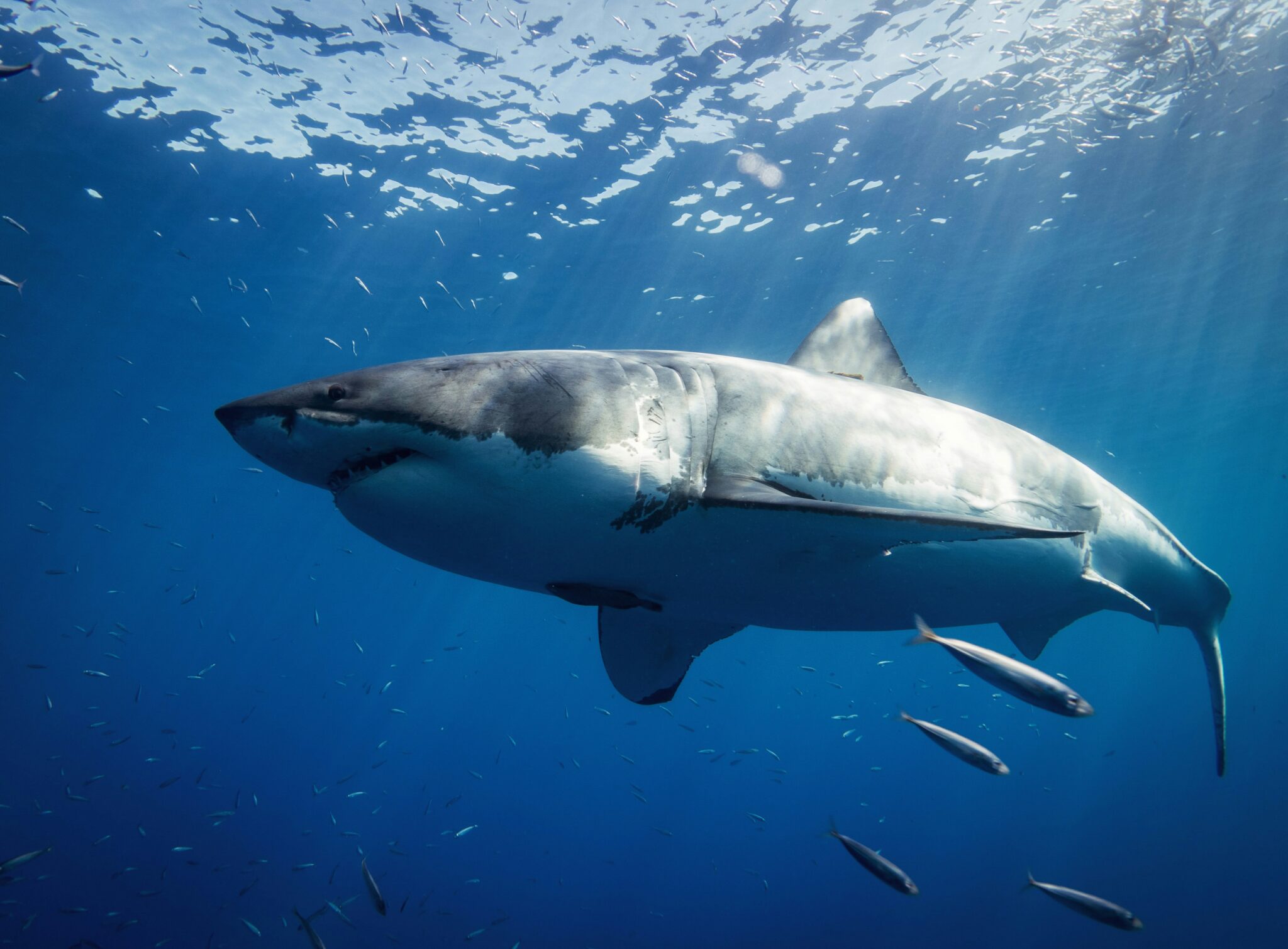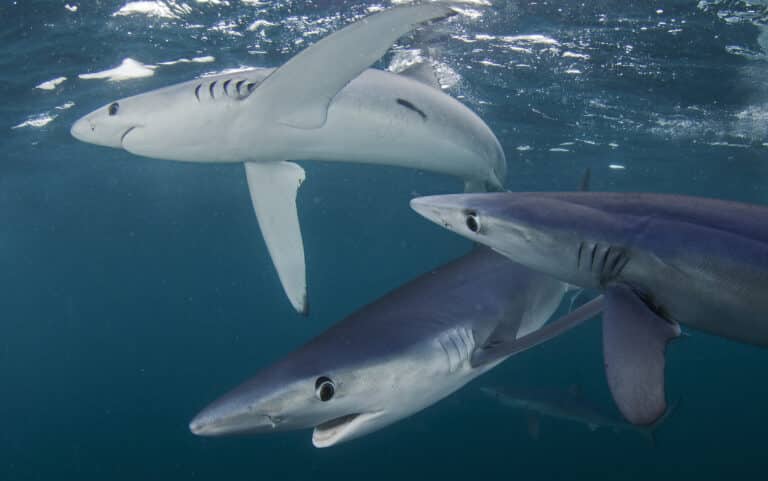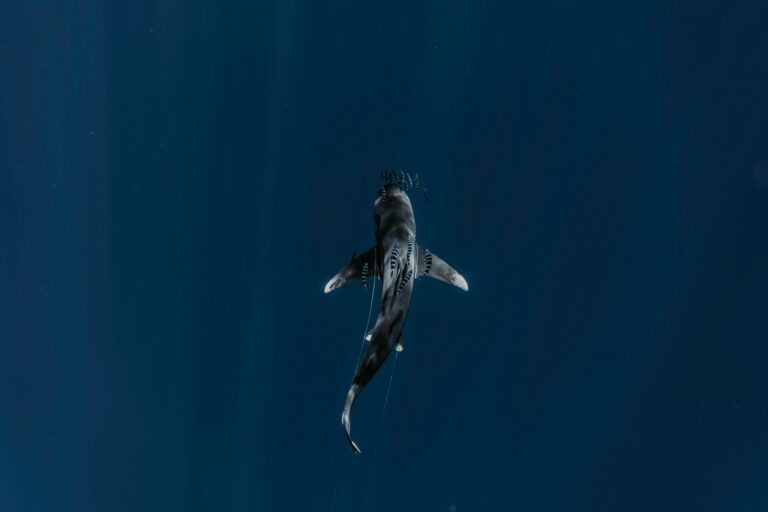Great White Shark vs Bronze Whaler: What Are the Differences?
Cape Town’s coastline hosts some of the world’s most dynamic shark interactions. Two species in particular shape both the ecosystem and local shark tourism: the Great White Shark (Carcharodon carcharias) and the Bronze Whaler (Carcharhinus brachyurus), also called the Copper Shark. While both species can be seen in Cape Town and Gansbaai, they differ in size, behaviour, hunting strategy, and ecological role. Check out our Gansbaai shark tours to see these sharks in person.
Recognising these differences deepens our appreciation of South Africa’s marine biodiversity and helps promote safe, informed interactions in the water.


Size and Body Shape
Great Whites are much larger.
- Average size in Cape waters: 3.5–4.5 m for females, 3 m for males.
- Maximum confirmed size: Over 6 m (documented in multiple global sightings).
By contrast, Bronze Whalers are sleeker and smaller:
- Usually 2.1–3.3 m in length.
- Characterized by a streamlined, torpedo-like body built for long-distance, sustained swimming.
A great white is the ocean equivalent of a powerful lion, built for burst strength and ambush.
A bronze whaler is more like a cheetah, built for sustained speed and endurance.
Coloration and Appearance
Great White:
- Grey dorsal surface, white underside.
- Thick, conical snout.
- Massive triangular jaws.
Bronze Whaler:
- Distinct bronze-to-copper sheen in sunlight.
- Longer, more pointed snout.
- Slenderer, with a crescent-shaped tail for efficient cruising.
Underwater, bronze whalers often reflect light with a golden shimmer — one of the easiest visual cues when cage diving.
Feeding Behavior
Great Whites: The Apex Ambusher
Great whites are ambush predators, historically around Seal Island where Cape fur seals gather. Research in False Bay (Marine Biology Journal, 2012) shows that white sharks used vertical surprise attacks from below, sometimes breaching entirely from the water — the famous “Air Jaws” behavior.
Their diet includes:
- Cape fur seals
- Rays
- Other sharks
- Whale carrion
Their hunting strategy is built on short, explosive bursts of speed — up to 40 km/h.
Bronze Whalers: Pack Hunters
Bronze whalers more often hunt in coordinated groups, especially when targeting schooling fish like sardines, mackerel, or yellowtail. Studies off South Africa’s southwest coast show that bronze whalers display social foraging, adjusting behavior based on group presence and prey density.
Their diet includes:
- Pelagic fish
- Squid
- Occasionally smaller sharks
This cooperative hunting style is particularly noticeable during the Sardine Run on the east coast.
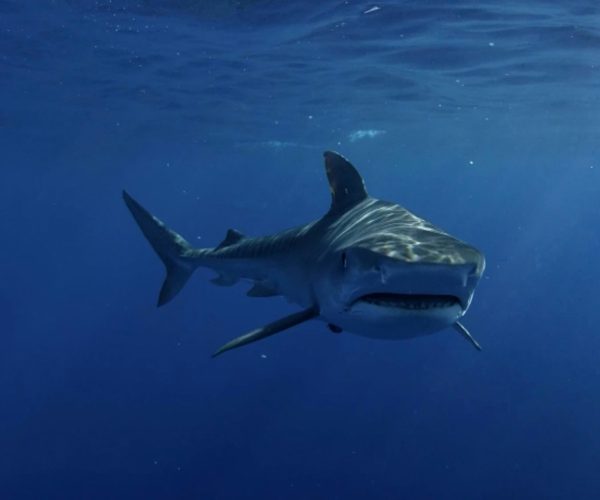
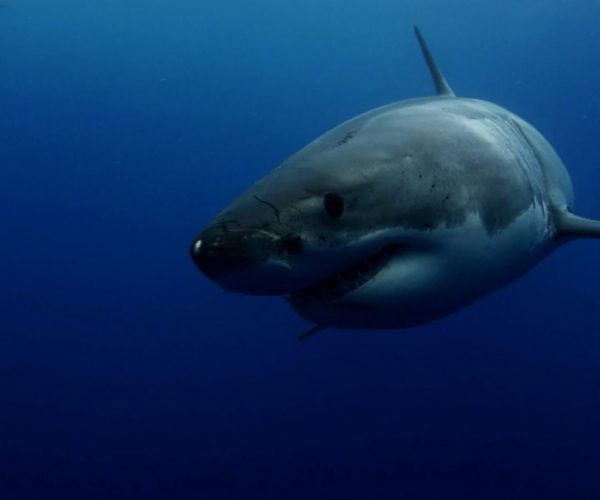
Interaction with Great Whites
One of Cape Town’s most fascinating dynamics is the competitive relationship between these two sharks.
Long-term surveys in False Bay have observed that when great whites were present, bronze whalers tended to keep their distance. But when great white sightings decline (as seen in periods since ~2017), bronze whaler presence increases noticeably. This pattern suggests top-down ecological control — a hallmark of apex predators shaping the behavior of secondary predators.
Temperament and Diver Encounters
Great Whites are cautious around divers, often making slow, investigatory passes before committing to interaction.
Bronze Whalers, by contrast, are more curious and active, frequently swimming closer to cages and boats, making them a popular species for responsible cage-diving experiences when great whites are not sighted.
However:
- Both must be respected.
- Neither is “friendly.”
- Behavior varies by individual and environmental context.
Ecological Roles in Cape Waters
| 🦈 Feature | 🧊 Great White Shark | 🌊 Bronze Whaler Shark |
|---|---|---|
| Trophic Role | 🏆 Apex predator | ⚖️ Meso-predator |
| Main Prey | 🐟 Seals, large fish, other sharks | 🐠 Schooling fish, cephalopods |
| Influence on Ecosystem | 🌍 Regulates prey → prevents trophic imbalance | 🌿 Fills mid-level predatory niche |
When great white presence declines, bronze whalers rise — a trophic cascade documented in False Bay by local marine research groups.
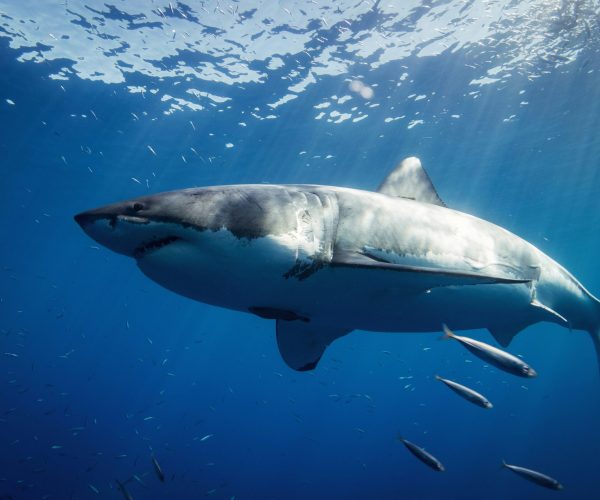
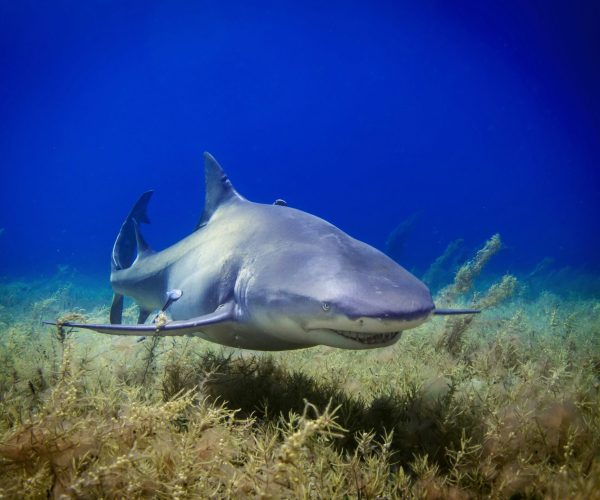
Why the Differences Matter
Understanding these distinctions helps:
- Conservation: Both species face fishing pressures and require different management strategies.
- Tourism: Knowing which species is present shapes guest expectations and safety.
- Education: Helps promote respectful coexistence between people and sharks.
Final Thought
The great white and bronze whaler are not competitors in a simple hierarchy — they are interdependent parts of the same ocean system, each shaping Cape Town’s marine environment in powerful ways. To witness either in their natural habitat is to see millions of years of evolution at work — a reminder of the depth and diversity of the ocean we share.

